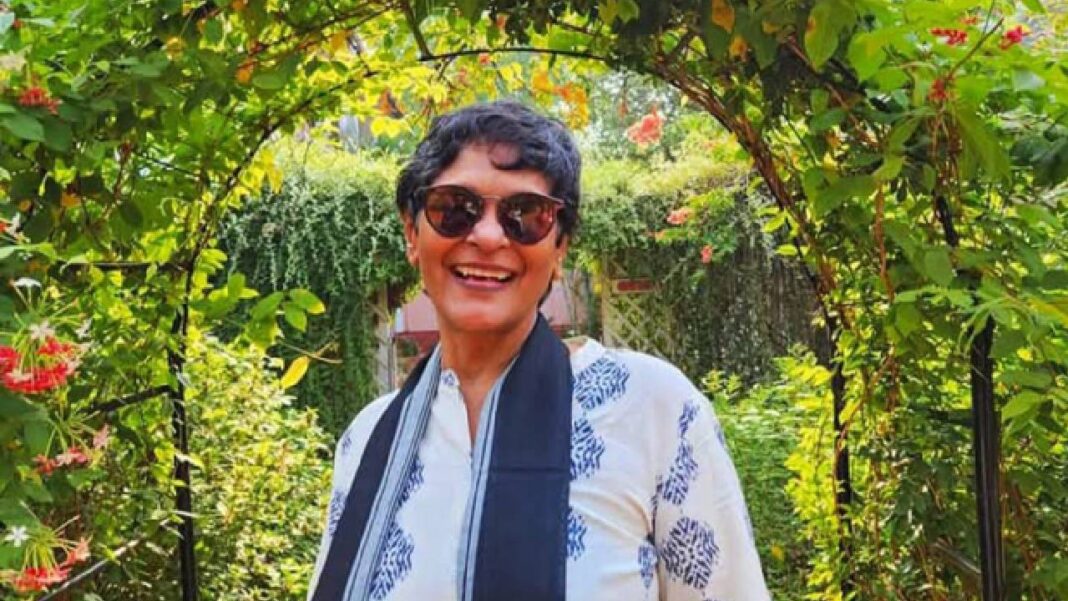Resilient, passionate, and deeply rooted in the cultural fabric of Vizag — Jayshree Hatangadi is a name synonymous with heritage storytelling, tribal education, and environmental advocacy. As a beloved heritage-history narrator and facilitator for tribal children in the remote Agency areas of Araku, her tireless efforts have left an indelible mark on the region.
Neither age nor an ongoing battle with cancer has dimmed her spirit. A globe-trotter turned grassroots warrior, Jayshree has lived in remote tribal regions, organised nature and heritage treks, authored books preserving tribal culture and language, and consistently raised her voice for the protection of local arts, crafts, culture, nature, and the conservation of Buddhist archaeological and geological heritage.
Alongside her husband Sohan, she has championed conservation efforts, worked closely with district administration departments, and brought attention to a wide range of socio-cultural and environmental issues—from safeguarding heritage sites to promoting sustainable tourism, eco-friendly crafts, and improving health and education for vulnerable tribal communities.
In this conversation with Sulogna Mehta, Jayshree traces her remarkable journey from a marketing professional in the 1990s to a powerful voice for heritage and environmental conservation.
Growing Up as a Navy Child
I was a Navy kid. My father, Surgeon Commander T. Surya Rao, was the first qualified neurosurgeon with the Armed Services, while my mother, Malathi—a homemaker—was deeply inclined towards arts, crafts, and heritage. Due to my father’s transferable job, I had the opportunity to live and study in different cities across India, including Pune, Mumbai, Kochi, Lucknow, and of course, Vizag. In the 1970s, my father was posted in Lucknow, which then housed the Armed Forces’ only neurosurgery centre. These constant moves meant I mingled with people of various age groups and socio-cultural backgrounds, which greatly broadened my horizon. I was also very close to my grandmother, C.V. Ratnamani, who had witnessed the Japanese bombing of Vizag during the Second World War on April 6, 1942. She passed away a few years ago, but her memories and stories have stayed with me. I also have two siblings—my brother, an IIT Kanpur alumnus, now resides in California, while my sister works in the media communication department of Apollo Hospitals, Chennai.
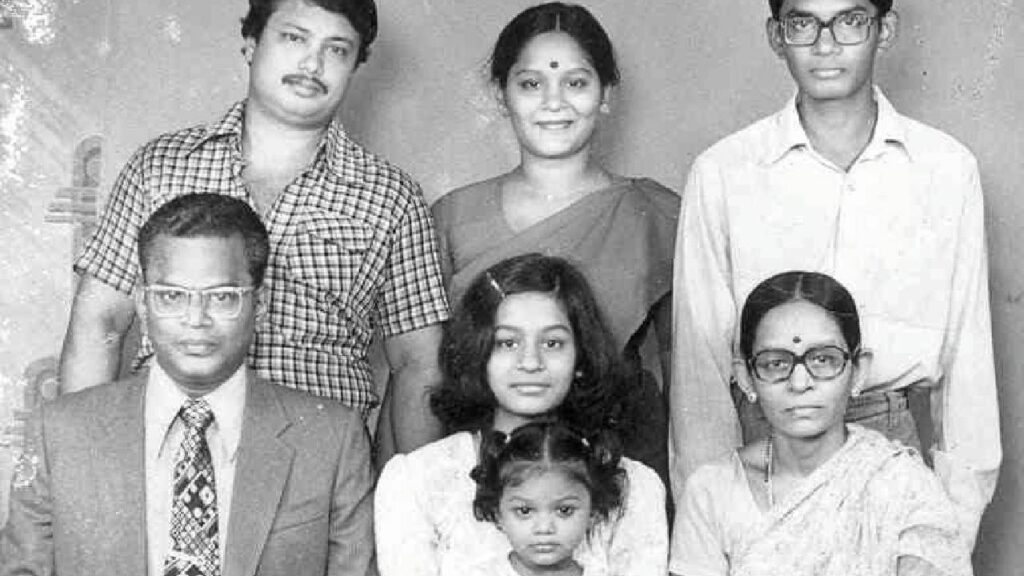
From Convent Schools to College Adventures
Instead of Kendriya Vidyalaya, I attended convent schools. I studied at St. Joseph’s School in Mumbai, Visakha Valley School in Vizag, and Loreto Convent, among others. Later, I graduated from Awadh Degree College, where I pursued English, Political Science, and Psychology. I also studied Library Sciences. I vividly remember how, during my college days, marketing teams from top multinational companies would visit the campus. I would often volunteer to promote their sales. Without holding a formal degree in the field, but driven by sheer interest, I would set up tables outside the college on weekends—offering coffee, health drinks, and more—interacting with people and making sales. It helped me earn pocket money and sparked my lifelong passion for communication and outreach.
Uniting Traditions
Mine was a love marriage—across cultural backgrounds—which was quite uncommon in those days. I was 19 and still a college student when various matrimonial alliances were being considered for me. My grandmother lived in Vizag, and I often visited the city during vacations. Sohan, whose father was from Karnataka and mother from Kolkata, had grown up in Vizag. We were friends, and I would confide in him about the happenings in my life. One day, he expressed his wish to marry me, though he was unsure if his proposal would be accepted. At the time, he was working with a refrigeration company. To our relief, my parents agreed to our marriage. Sohan had once told me, “I’ll show you the world. Wherever we are, we’ll have a very good life.” He kept that promise—both literally and metaphorically—and we got married in 1978. It’s been a happy journey of 47 years. Though we’ve travelled individually on several occasions, we’ve made it a tradition to travel together to a beautiful location every year on our anniversary. Sohan and I share many common interests, and he has always been immensely supportive of my initiatives and passions. We have a daughter, Palki, who is the vice-president of a global fashion apparel and accessories company. Sometimes, she joins us on our trips. She is married, and we are now blessed with a lovely grandson.
Exploring Creativity and Wanderlust
I enjoy driving, especially to the hills, and take great pleasure in teaching and engaging with children. I love reading about history and narrating stories related to heritage. Decorating and dressing salad dishes, singing along with ‘Alexa,’ practising photography and travelling the world are among my favorite pastimes. So far, I have traveled to about 45 countries—sometimes solo, sometimes in groups, and often with family. I am particularly drawn to destinations that offer a blend of scenic natural beauty and rich historical or cultural heritage.
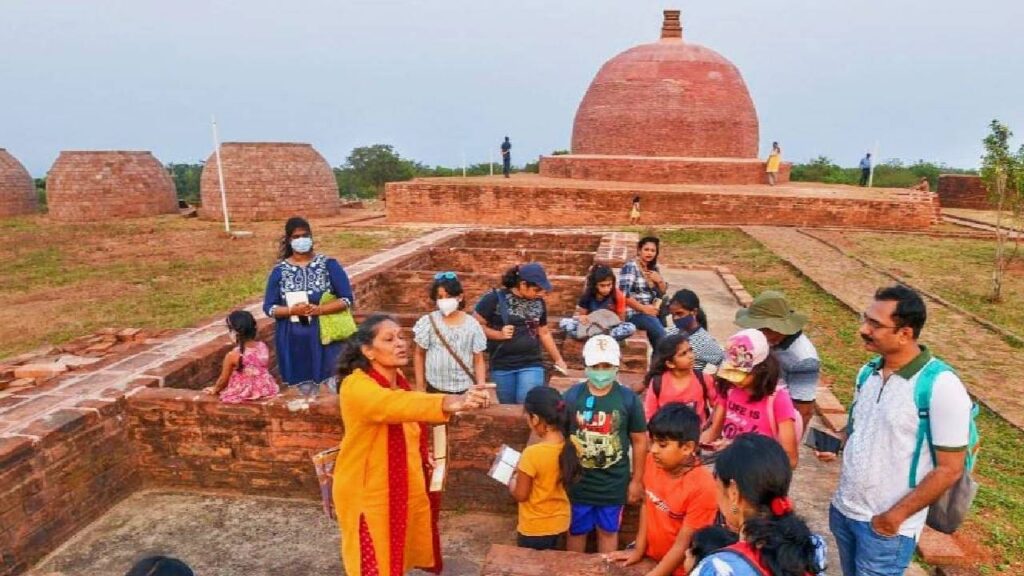
Facing Cancer with Courage
In May 2023, I was diagnosed with ovarian cancer and underwent chemotherapy along with two surgeries. Thanks to the unwavering support of skilled doctors, my family, and my own willpower and trust, I was able to recover within a year. However, since last month, I have been undergoing another round of chemotherapy as part of my ongoing treatment.
The big accident
In 1984, I was involved in a major auto-rickshaw accident near R K Beach in Vizag. Fortunately, my sister and daughter sustained only minor injuries, but I had to spend several months in the hospital. However, the accident resulted in the loss of sensation in my right arm.
Celebrating Achievements
I received the Paul Harris Award from the Rotary Club in 2015 and have been felicitated by various clubs, educational institutes, NGOs, and heritage groups. In 2024, I felt especially honored when I was invited to speak about Vizag’s heritage to foreigners on board the international residential ship, The World.
Marketing in the Pre-Digital Era
While my husband was working with a refrigeration company and later with another well-known electronics concern, I took training within these companies and continued marketing services, just as I had done in my college days—selling coffee and health drinks in small setups wherever I could find space. When Sohan moved from Vizag to Chennai, I joined him there between 1985 and 2002. Those years were spent juggling household responsibilities alongside my work. I trained thousands of people and college students, providing them practical exposure to marketing strategies, consumer behavior and trends, and customer interaction, all in a pre-social-media era. In December 2002, we shifted to Bahrain, where I continued training and headed sales and marketing teams, helping companies launch products timely into the right markets. We returned to Vizag in 2005, and the following year, our daughter got married.

Expanding Horizons
Back in Vizag, I came into contact with the NGO Samata through Sohan. This organization worked towards the upliftment of tribal people. I underwent soft-skills training with them and became fascinated by the tribal communities—their language, culture, farming, festivals, and more. I also learned about a community-based organization called Sanjeevani. In 2007, I met Woodi Halsey, a US academician and educationist who was the director of India Operations for the School Year Ahead (SYA) Programme, which facilitates student exchanges. Under this programme, foreign students stayed in Indian homes to learn about the local culture, heritage, environment, community, and language. These programmes and associations deepened my interest in heritage and culture. The enriching experiences created lasting connections and broadened my perspectives. I realized that heritage lends a distinct character to a place beyond its mundane identity.
Teaching, Learning, and Growing Together
I started visiting tribal areas regularly, living there for a couple of weeks every two months to gain insight into their customs, language, and traditions. The main tribes in these regions include the Khonds, Gadba, Valmiki, Koyas, Kondadora, and Nookadhora. I interacted with school children, helping them learn painting, music, and extracurricular activities, while also speaking to them about health, hygiene, and life skills. Collaborating with ‘Ecofemme’ from Pondicherry, I raised awareness about reusable, eco-friendly, cloth-made sanitary napkins and distributed over 6,000 such kits in tribal schools last year and prior to the pandemic.
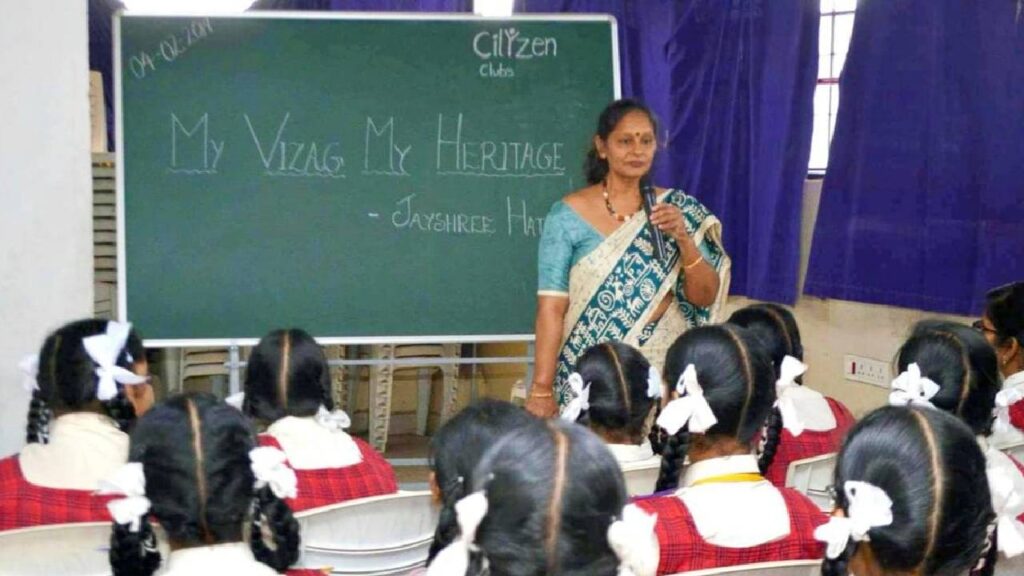
Preserving Tribal Heritage Through Literature
While teaching tribal children in residential schools, I noticed a disconnect between them and their birth language and cultural roots. Tribal boys and girls leave their villages as early as Class IV to pursue education in residential schools, staying away until Class X and beyond. This prolonged separation causes a significant disengagement from their villages, families, and most importantly, their language. They lose exposure to cultural and traditional practices, including farming, nature, and the wisdom embedded in their lifestyle. For example, I was surprised to learn that not a single junior college student knew about the Patha Vithanala Pandaga—the traditional seed festival essential for preserving the science of seed and soil. This lack of awareness highlights the growing gap between tribal youth and their heritage. This is where my book Girijana Vaibhavam plays a role. It documents, preserves, and shares the rich heritage, traditional knowledge, community ancestry, and cultural practices of tribal communities. Through its insights, it helps young tribal boys and girls reconnect with their roots, fostering pride and understanding of their invaluable legacy. The first edition was published in 2019, followed by the second edition in early 2025.
Supporting Tribal Craftsmen
Vizag district’s Etikoppaka heritage crafts village is renowned for making eco-friendly toys. With Padma Shri awardee master craftsman CV Raju, I tried to facilitate vocational training in woodcraft turning for tribals in the Araku area, enabling them to make toys using locally available wood and vegetable dyes. An interpretation centre about the history and significance of toy-making is also being planned at Etikoppaka.
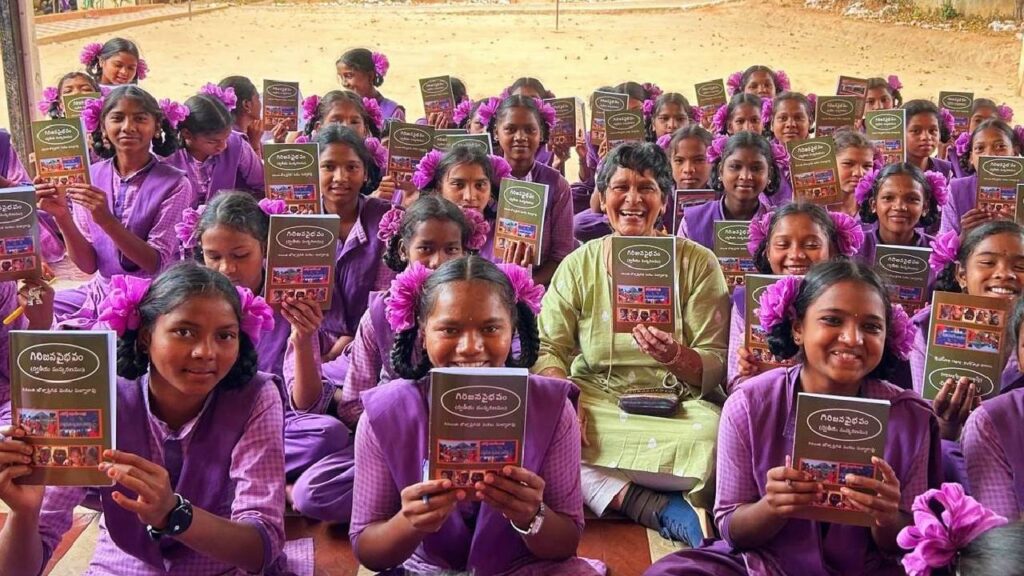
Heritage Walks to Raise Awareness
To increase awareness among Vizag’s citizens about the city’s rich history and heritage, Sohan and I have organized several heritage walks and tours at historic and archaeological sites, including colonial-era locations and 2,000-plus-year-old Buddhist heritage sites. Vizag holds immense tourism potential in these lesser-known areas of the city and district. During tours of archaeological sites like Thotlakonda, Bavikonda, Bojjanakonda, Pavuralakonda, and the colonial Old Town, I narrate the history of these places. I’ve noticed that people, especially children, are curious and eager to learn. Through media organizations, we have urged the government and district authorities to take up conservation efforts and improve infrastructure by installing signages and interpretation centres. Even when I cannot visit physically, I wander through cultural memories and quiet corners of the past, gathering stories in my mind—every day still feels like the first time. We also took the initiative to protect the rare geo-heritage site Erra Matti Dibbalu (Red Sand Hills) from encroachment and illegal removal of red earth by land sharks. We involved the media and citizens to raise environmental consciousness.
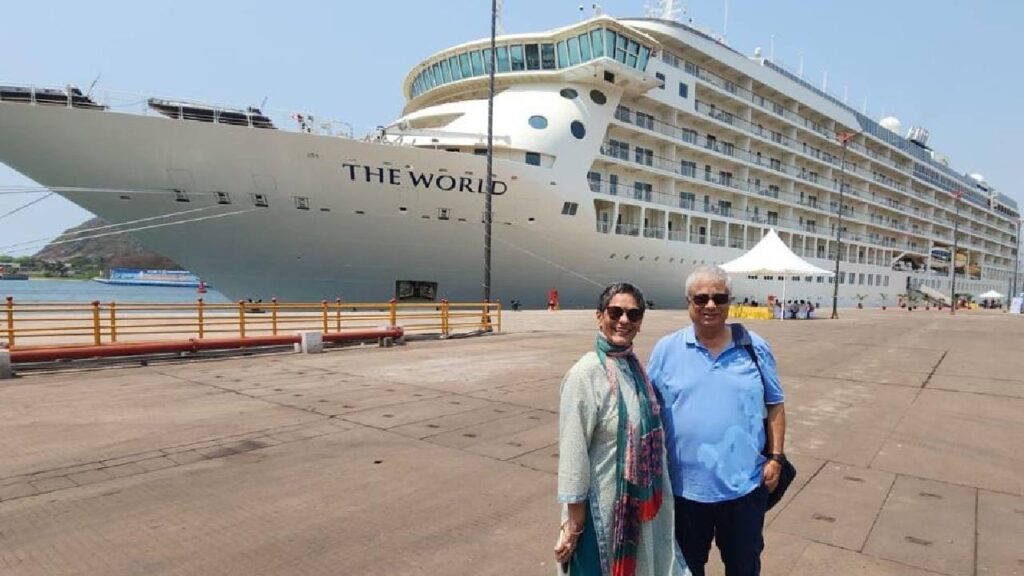
Rapid fire
Favourite holiday destination: Domestic destination is Orchha in Madhya Pradesh. International is Rome.
A foreign city you wish to visit: Tokyo
Favourite dish: Lime rasam with chips
Favourite colour: Cream
Religious or spiritual: Spiritual
Favorite actor/s: Earlier, Rajesh Khanna and Sharmila Tagore. Now, Tom Hanks and Meryl Streep
Most scared of: I fear very little, but the thought of passing away before my aging mother truly scares me
Driving Force: To be useful, to make a difference and be part of community citizen participation.


